Riding High, Dingle Peninsula by Motorhome
We left the Killarney campsite with bins and tanks emptied, batteries maxed out and oodles of fresh water. Our main LPG bottle was empty so we nipped round the corner in to refill. It was an expensive station at €1.40 a litre, but we don’t use much gas so don’t much worry about it. Also, LPG refill stations aren’t too widely distributed in Ireland, and you can never tell if the next station will be empty, broken, or driven into by a car the day before you arrive. All these have happened to us over the years.
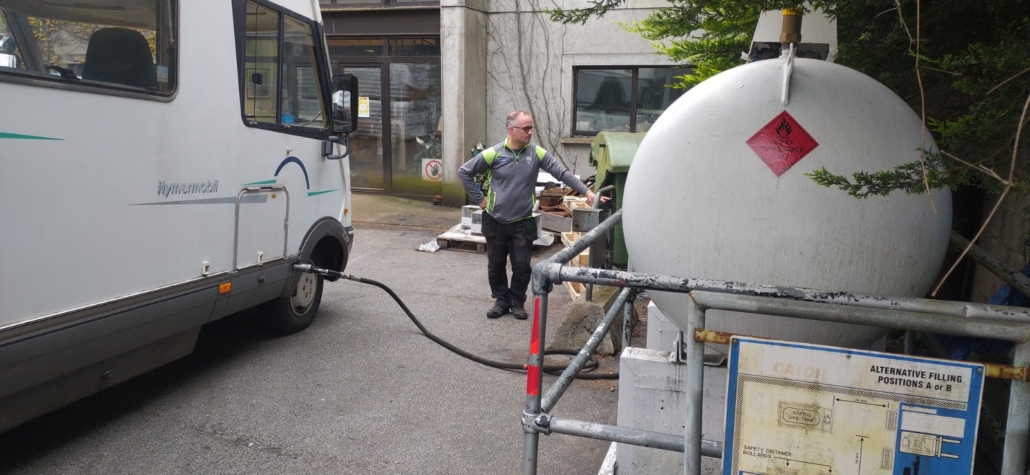
The refill point was at a coachbuilders in Killarney, who have a wide-old entrance and a big fat LPG tank just inside with an old-fashioned analog volume counter. A chap appeared and asked us whether we had non-removable tanks with a safety cut-off (yep to both, this is our system). We showed him our LPG adapters and he pointed out the correct one, a little-used ACME one, which always gets me thinking of Road Runner cartoons. We popped in the adapter and he attached the gun and did the refilling. All good, we’ve enough gas for this trip and a few weeks of the next one, wherever that takes us.

Ignoring the satnav and sticking to the wide roads, we headed onto the Dingle Peninsula by backtracking to Killorglin. From there more N road took us north until we swung west on the arrow-straight R561 to the tiny hamlet at Inch. There’s a 5km Parkrun here each Saturday morning and we nipped into to scope out parking options.
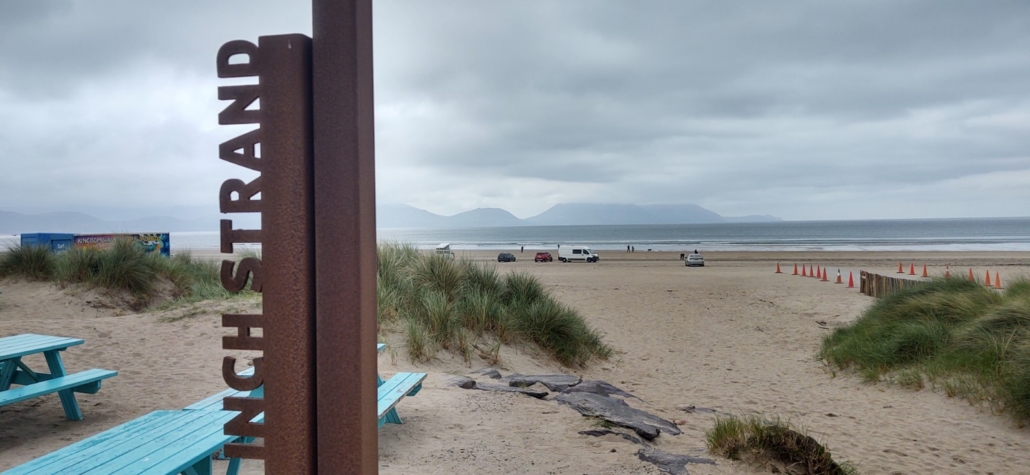
Famously you can park on the beach at Inch during the day, but equally famously a few folks have misjudged which areas of sand are sturdy enough and needed to pay for a tow out. Pulling in we found the small car park height-barriered, but luckily for us one of the three spaces outside the barrier opened up and we edged our big-old white butt in there. On foot we checked out the beach, topped with a scattering of cars and vans. Not as photogenic as we imagined, we opted to leave Zagan where he was, on solid tarmac.
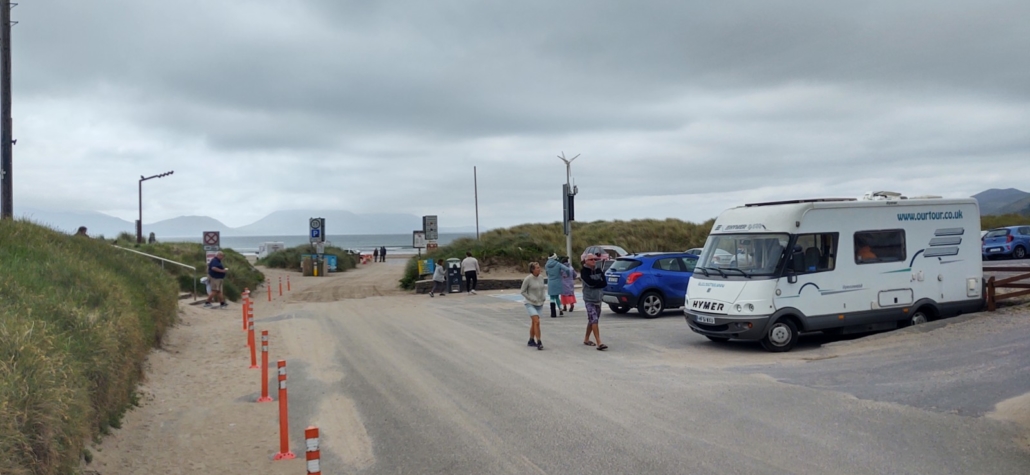
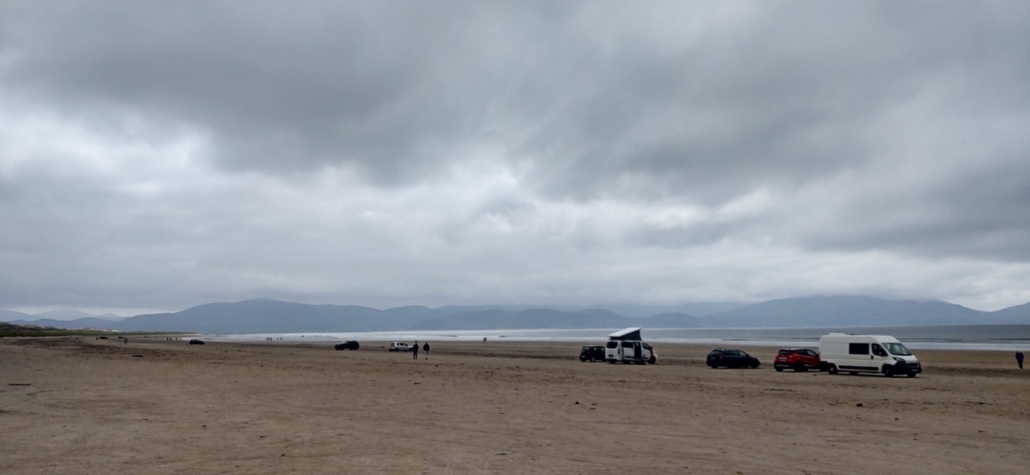
The park4night app has a paid spot above the beach along the road. What suits one doesn’t suit another though, and we wrote it off quickly. It’s not massively expensive, and has great seat views, but it’s on a decent slope and is right besides the road. Prime territory for the honking of horns at 2am, nah. We decided to book into the small campsite opposite the beach instead. We’d spend a couple of days out on the western edge of the peninsula then come back for Friday night. Jobsa-goodun.
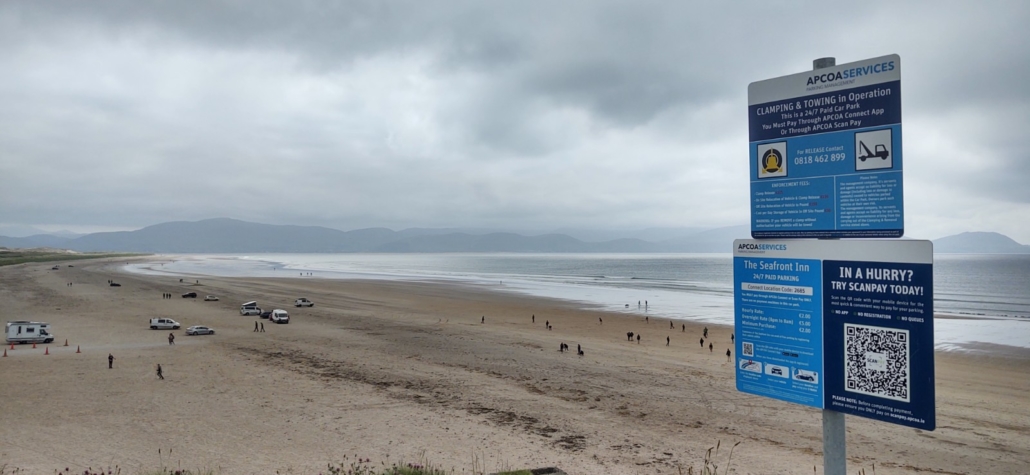
Refueled with a coffee, we headed west. The R561 soon merging onto the N86, another low-stress driving day, no high hedges and elbows-in action. As we rolled along a couple of signs told us we were entering a Gaeltacht. These are (sadly) relatively small areas of Ireland where Irish remains the predominant language. Our AA map of Ireland has them shaded in light yellow, and they tend to be in the more remote areas to the west of the island.

Next stop: the recycling centre! We’ve still one of our old leisure batteries to dispose of, so popped into the one about a mile before Dingle Town, where a friendly fella came over to the van and took it off our hands for free. There was a sign up at the entrance saying to get rid of a standard 60 litre black bag of rubbish was €5, so we were pleased we’d got rid of everything we could at the campsite.
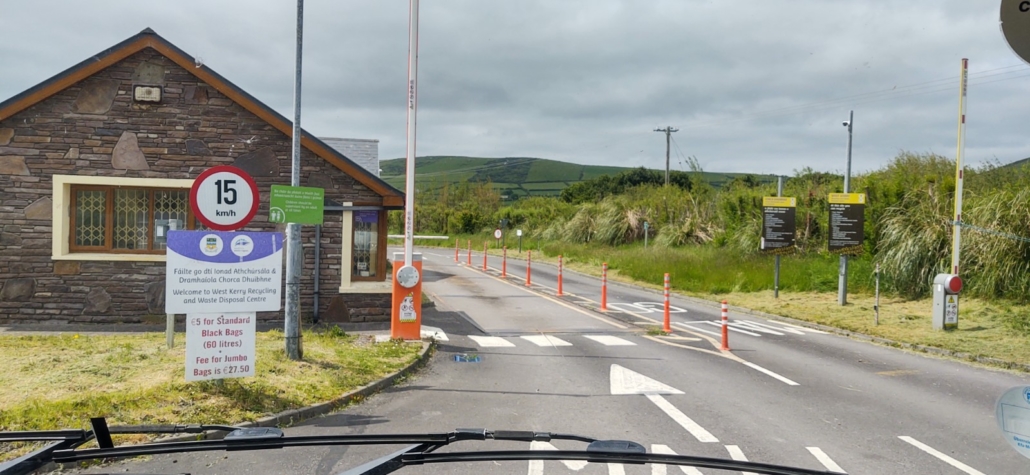
A bit lighter, on to Dingle Town. In we rolled, parking alongside the road on the edge of town. Our van’s not the narrowest, but just about fitted in the lines. OK for a daytime visit but not good for the night, we’d have been rocked sideways by every passing vehicle, been there, done that, many times! Dingle proved an interesting small town, tons of curious independent shops and characterful pubs. One advertised an evening show by David Geaney, Ireland’s fastest dancer of Britain’s Got Talent fame.
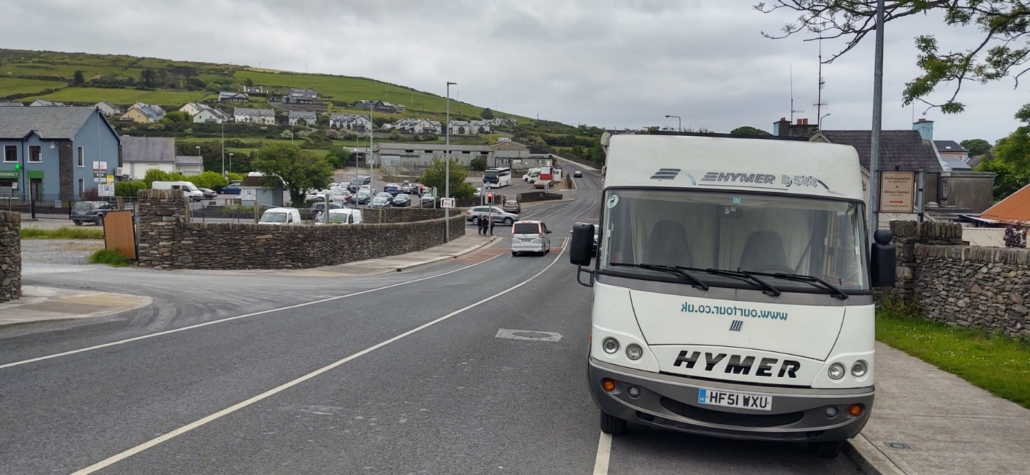
In the end we made do with an hour wandering the port and streets. A nip into tourist information confirmed the nearest place for motorhomes to overnight was 5 miles away. Dingle was packed with tourist coaches, and caters well to package holiday makers, but not to motorhomes. As far as we could tell all the car parks in town have no overnight clauses. Stuff it, the town made it too hard to stay! I may well now have witnessed some speedy Irish dancing in person, but I had to make do with watching David’s blur of feet on YouTube.
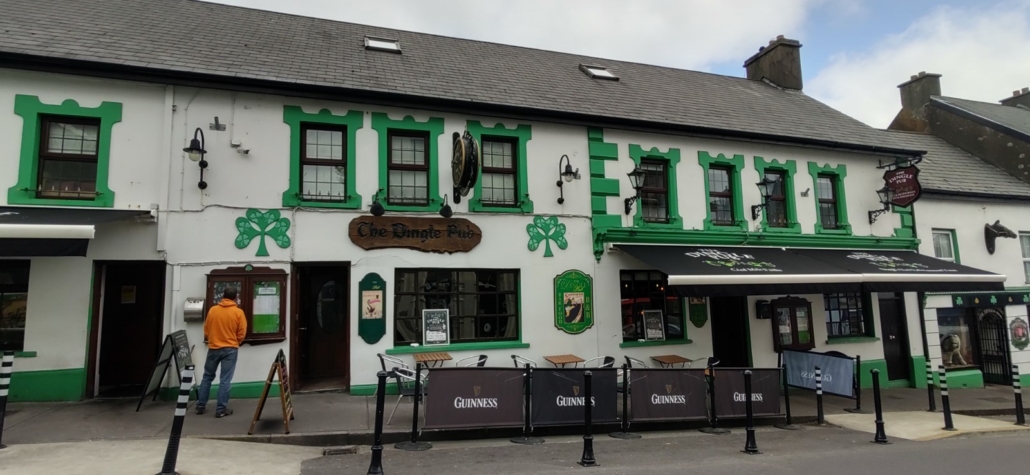
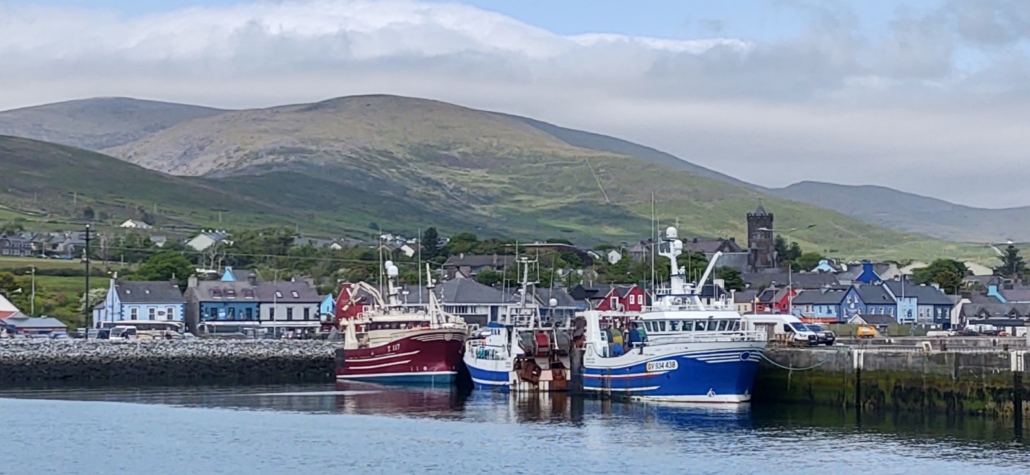
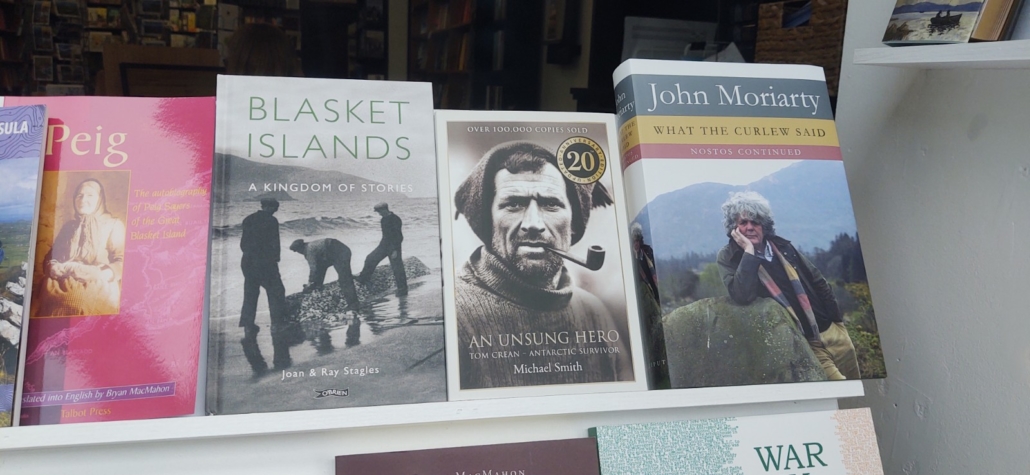
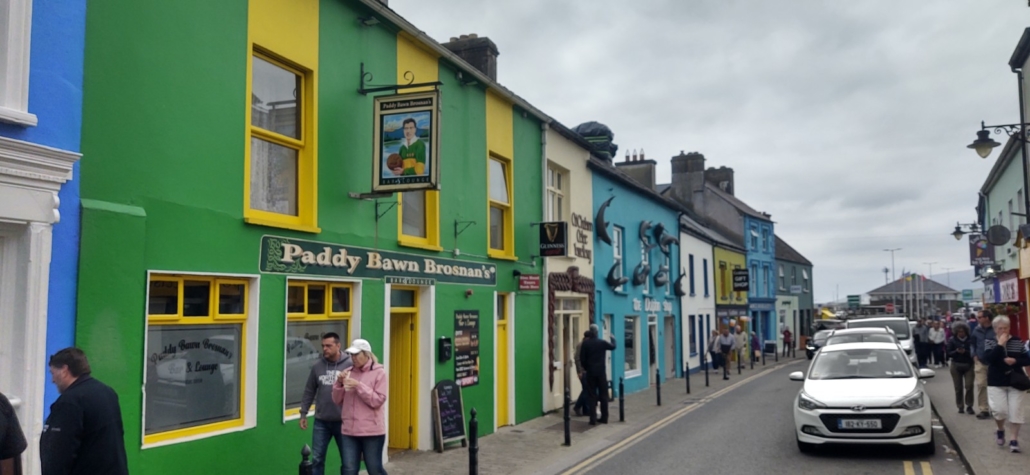
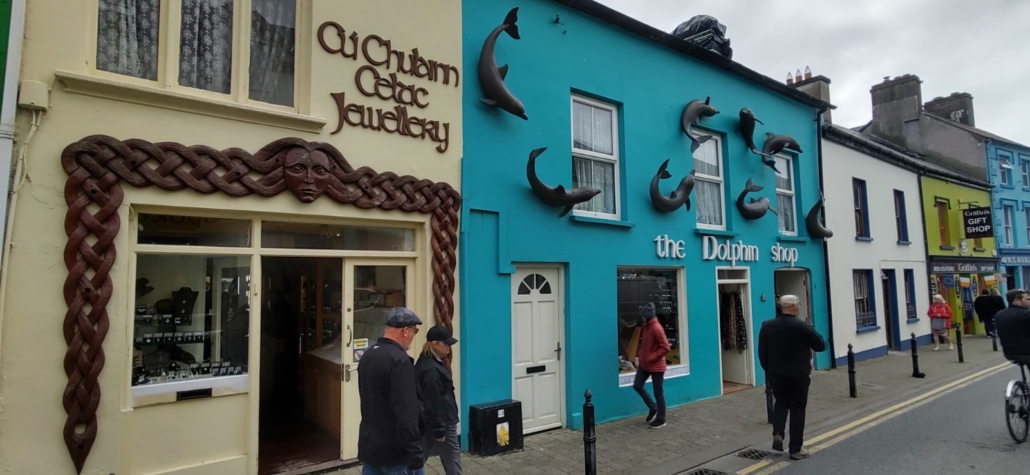
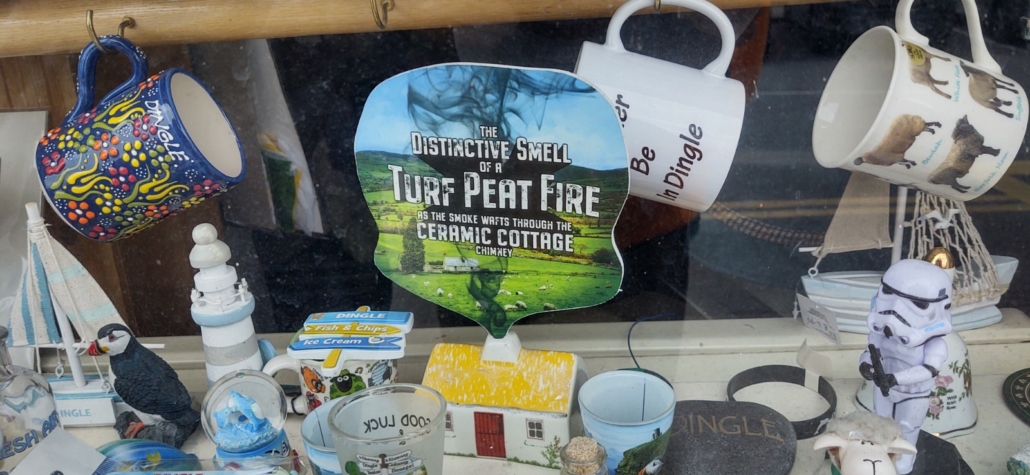
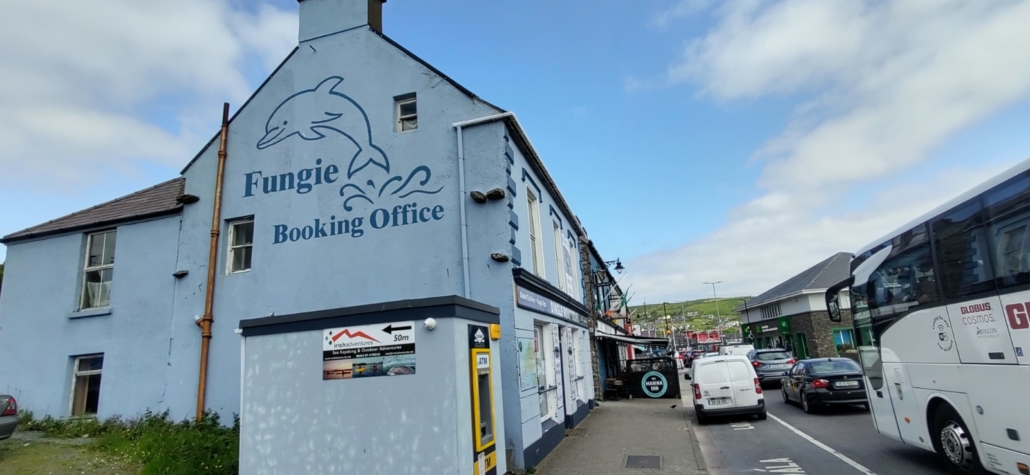
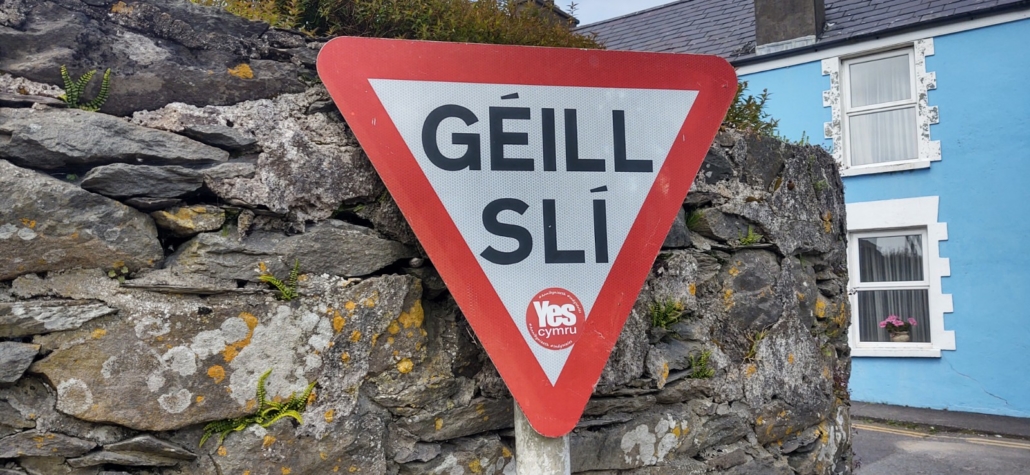
Stocked up at the local Lidl, we fired up Zagan and accidentally entered the world of one Páidí Ó Sé. Heard of him? If you’re Irish, I’m guessing you may well have. If you’re not, probably not. Páidí, although he sadly passed away a decade ago, was one of Ireland’s great Gaelic Football players and managers. He was a character too from the sounds of things, the master of craic, if the 10,000 photos from the inside of his pub are anything to go by!
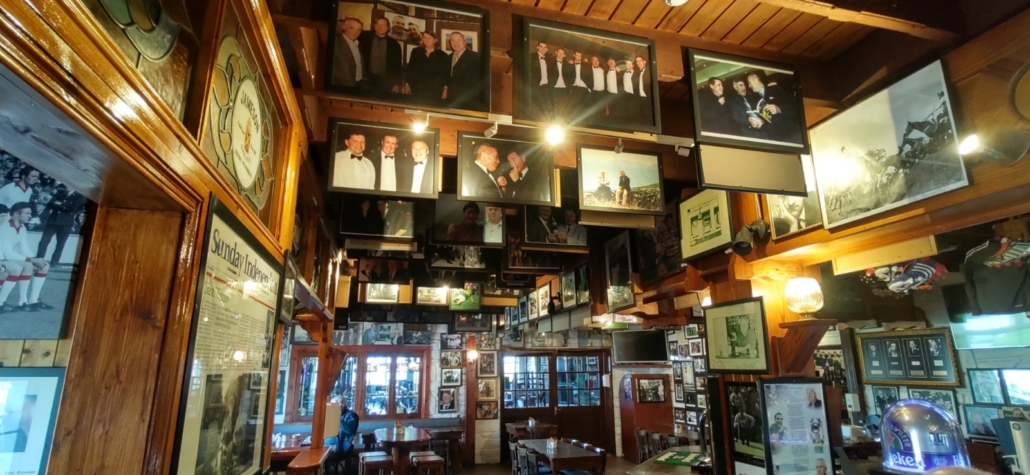
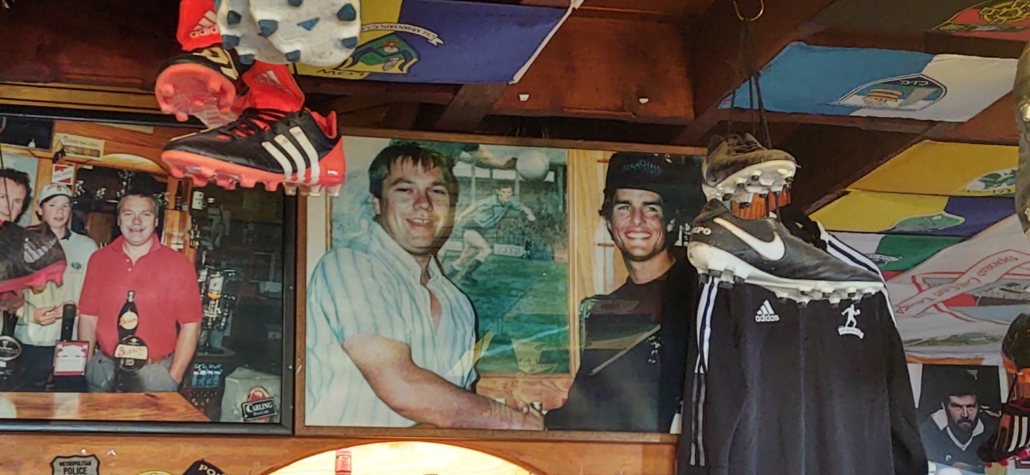
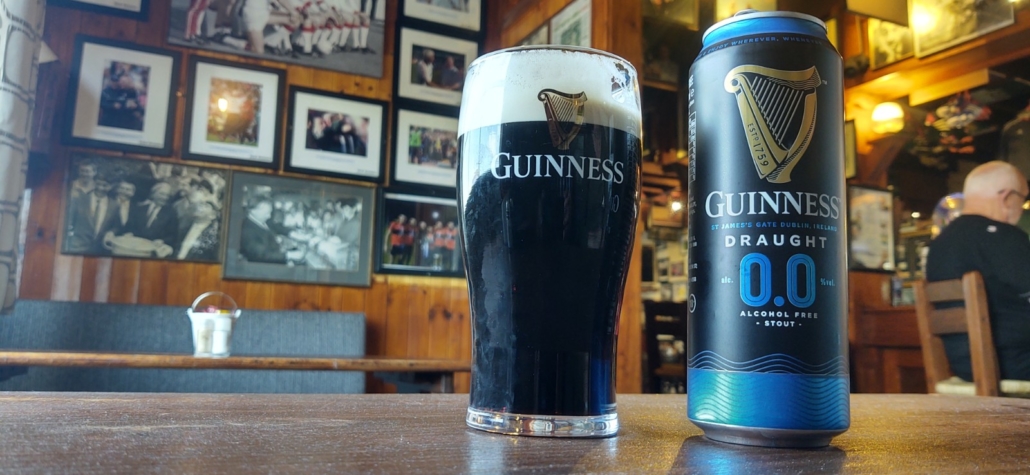
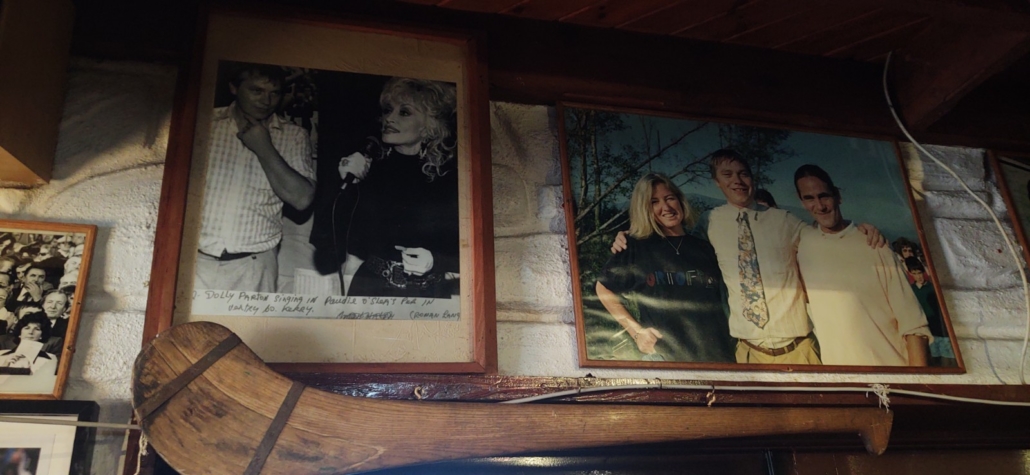
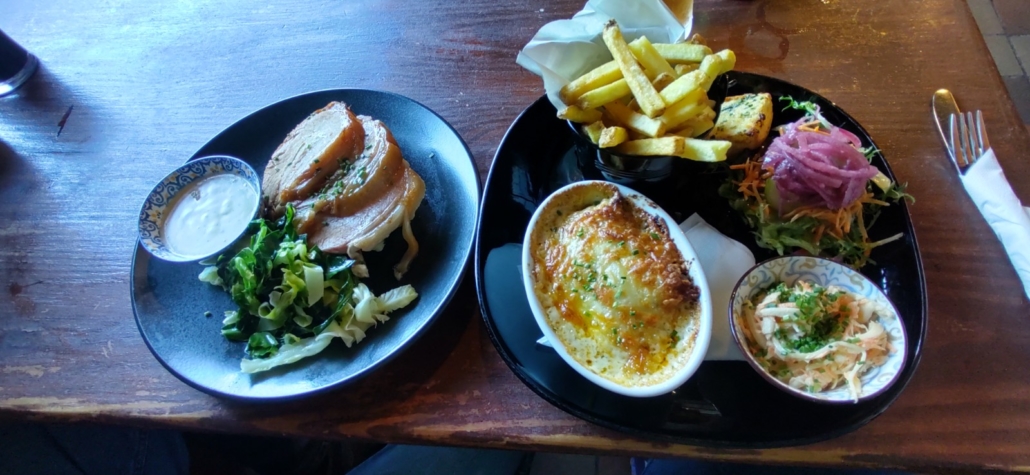
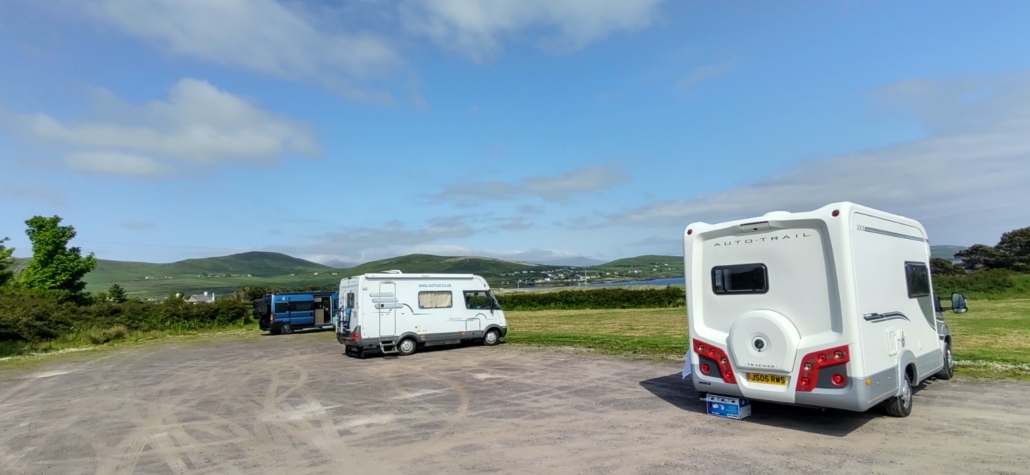
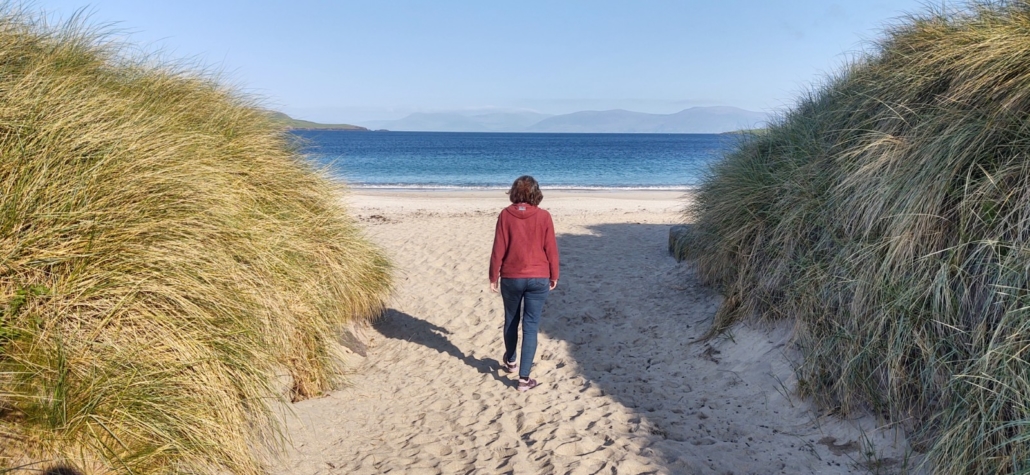
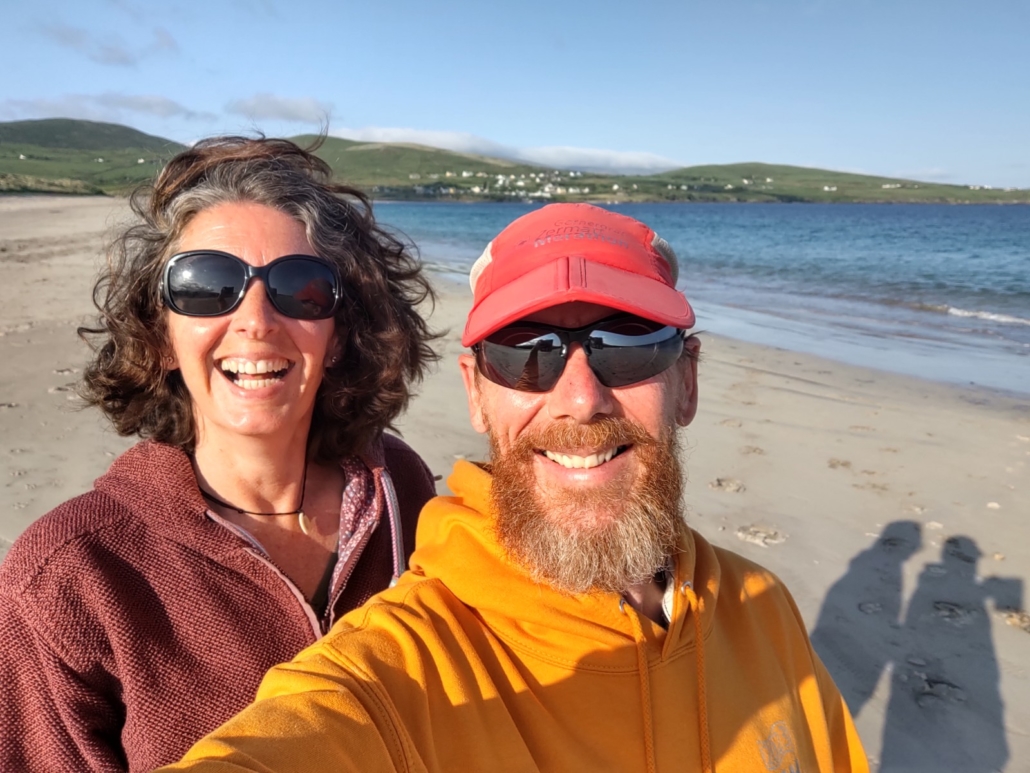
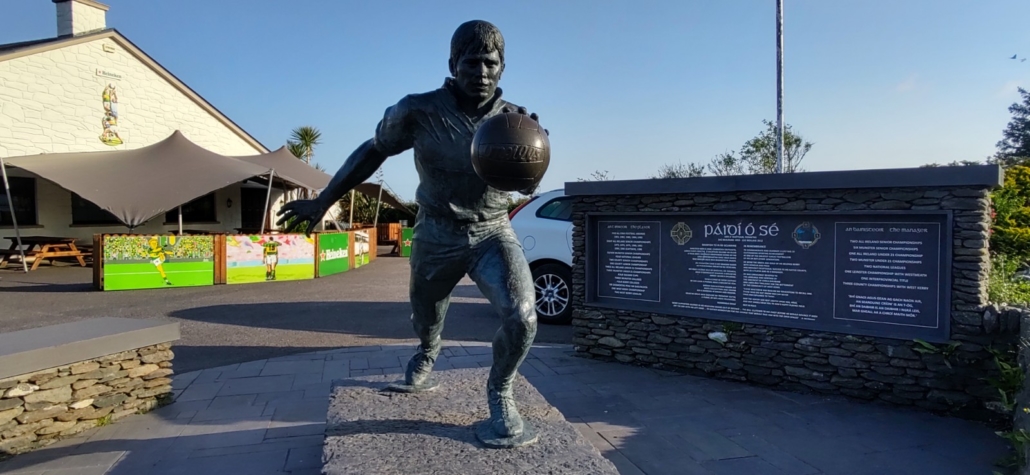
You see, Páidí Ó Sé used to own a pub, which these days welcomes motorhomes into their car park in return for drinking or eating in the pub (N52.12783, W10.379328). The car park has a lovely view across Ventry Bay, is set back from the road and just-about-flat. It is, of course, stumbling distance from the pub, and just a little further way from a beautifully unspoiled sandy beach. We piled in about 4pm and after a quick chat with a fellow vanner at the bar, and having missed lunch, fell upon our food like savages.
Everyone entering the pub was greeted by the staff with a cheery “Hello, how are you?”. Listening to the responses, almost every one was in English, but Ju told me later she’d heard someone reply in Irish. At that point the bartender switched to Gaelic too. Whenever we hear the native tongue, the conversation turns utterly opaque to us. Same goes for the written word. Most signs in Ireland are written in both English and Irish, and there doesn’t often seem much in common.
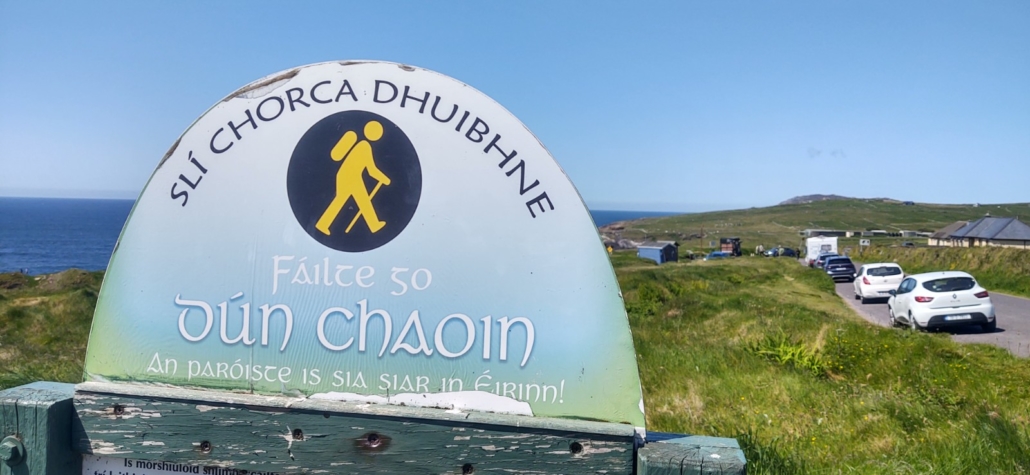
Today we headed further west and onto a spectacular section of the R559 below Mount Eagle (Sliabh an Iolair in Irish, see what I mean?). The land steepened as it crashed down into the Atlantic, and the road narrowed to the point coaches running along it appeared comically huge. A series of lay-byes with increasingly dramatic views had us pulling in and jumping out. This is the Slea Head Drive apparently, and it’s quite an experience.

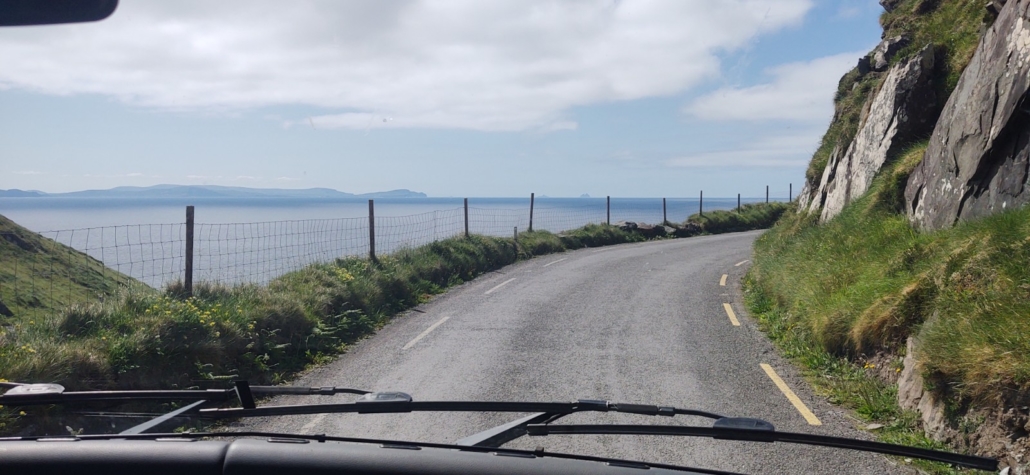
At one we nipped into the remains of an ancient stone fort, (5000 year-old in parts). Jerry, who inherited the land the fort stands on from his grandmother, took our €3 each and explained a few details about Cashel Murphy (Cathair Uí Mhurchú). He went on to explain he’s a goldsmith with a shop in Dingle, handing us a leaftlet, a smooth operator is Jerry! Having seen a couple of Ring Forts earlier on our trip we didn’t expect more from this visit, but the position of fortified settlement above the crashing Atlantic waves was evocative and dramatic. Apparently it was the centre of an ancient city, with the remains of stone dwellings spread across the hillside. It would have been quite some place to live.

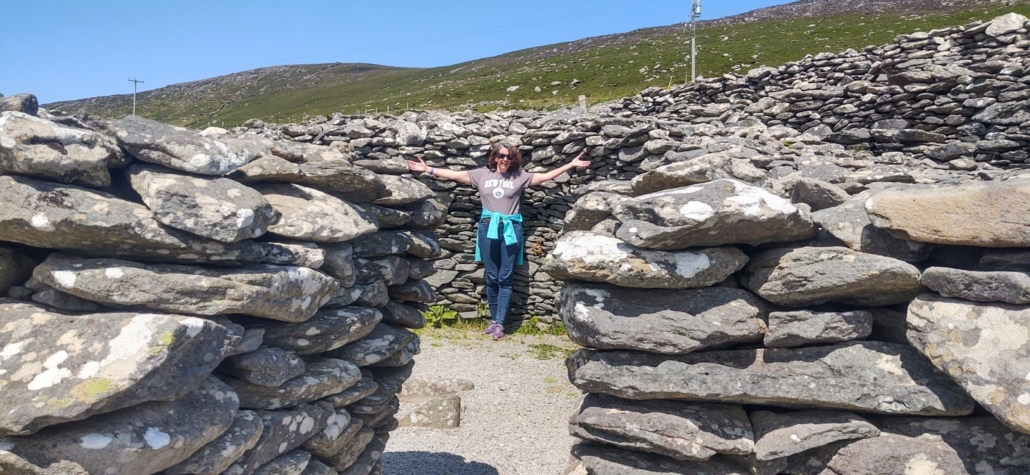
As we left we asked Jerry about the Gaeltacht. He told us he’s a native Irish speaker, having not spoken a word of English until he was four. He said folks who spoke Irish were laughed at in Dingle town if they didn’t speak English, as they were thought to be stupid. He recalled his school using a thoroughly depressing (very true I imagine) book about depression-era Ireland to teach Irish. Probably not the best way to encourage a good feeling about the language in his opinion (hard to disagree). Before we left he gave us a few sentences Gaelic and Ju asked how to say thankyou – go raibh maith agat – which sounded like ger-ra-margott to us! I immediately forgot it, Ju wrote it down.
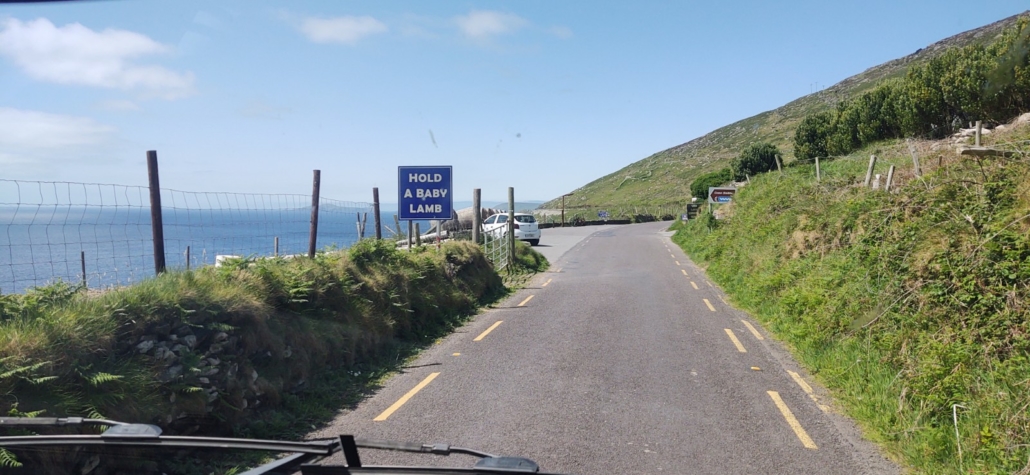
We’d a couple of potential wild camping spots in mind when we set off. The first was at Coumeenoole Bay, and if that didn’t work out there’s another parking spot at Clogher Strand. Both looked special on park4night, cliffs, beaches and wide open views of the Atlantic and the blue skies we’re currently blessed with. Before we could get to Coumeenoole, the road went a tad bonkers, clinging to the near-vertical hillside and narrowing to coach width. We loved it.
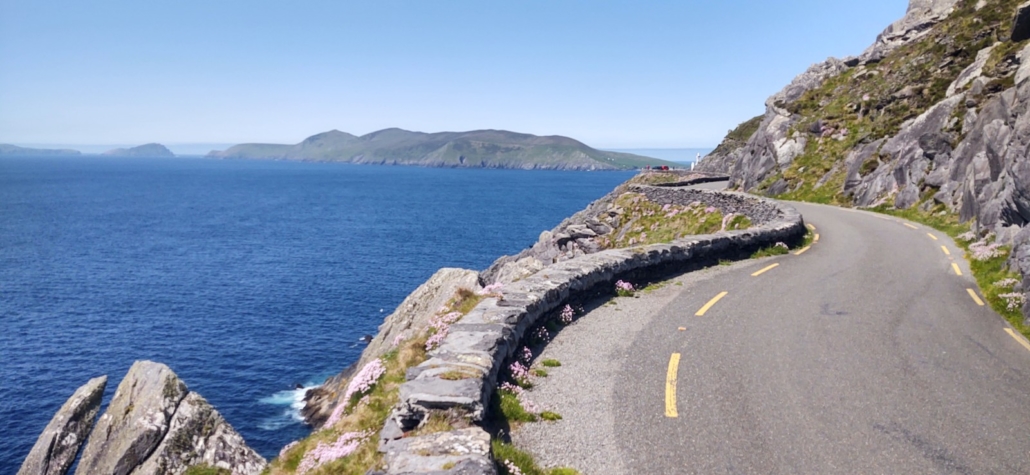
Even though it’s really narrow in places, there’s not much traffic and everyone’s a tourist, so no-one’s in a hurry to get past such camera-catching scenery. For some reason we’re all naturally driving clockwise around the loop from Dingle Town, although the road is two-way. Ju told me last summer there was a trial at making this direction mandatory in the summer months for coaches and motorhomes. This happened after vehicles got stuck facing each other on the corniche sections, causing two hour traffic jams. At this time of year there’s not enough traffic to be an issue, and we spent a bit of time with Ju out on the road photographing me driving the van.
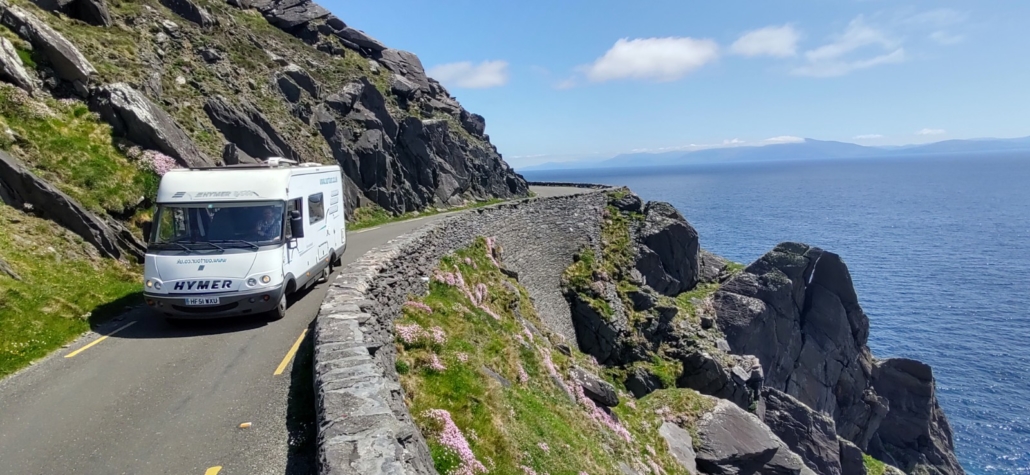
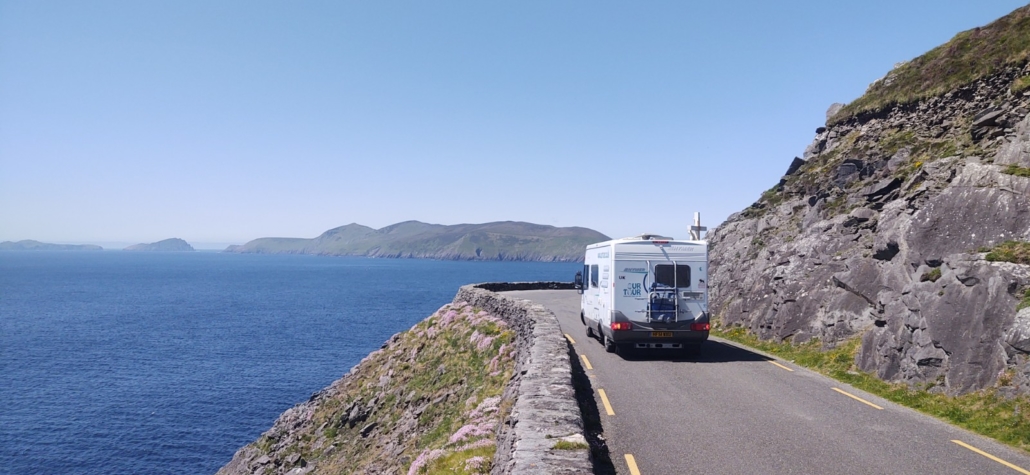
We finally arrived at Coumeenoole around 2pm and it was fully rammed. The parking area isn’t huge, but was packed with cars and vans, so we pootled on. Before we could get to Clogher, Ju spotted a Wild Atlantic Way sign pointing off the road, so we nipped down for a look. Less busy, we were able to easily get a space on the parking above the crazy path down to Dunquin Pier, the boarding point for ferries to the Blasket Islands. Easily visible from the coast anywhere around here, 150-odd people eked out a living on these barren rocks until finally abandoning the place in the 1950s.

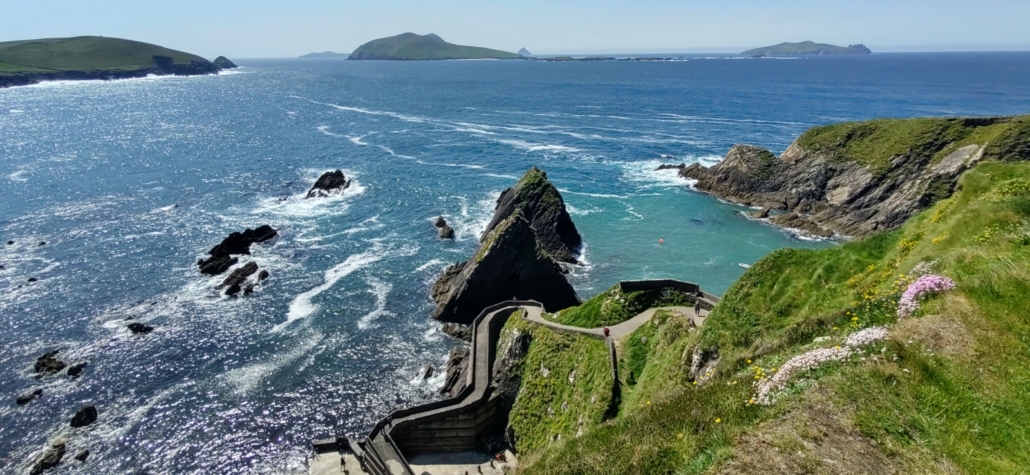
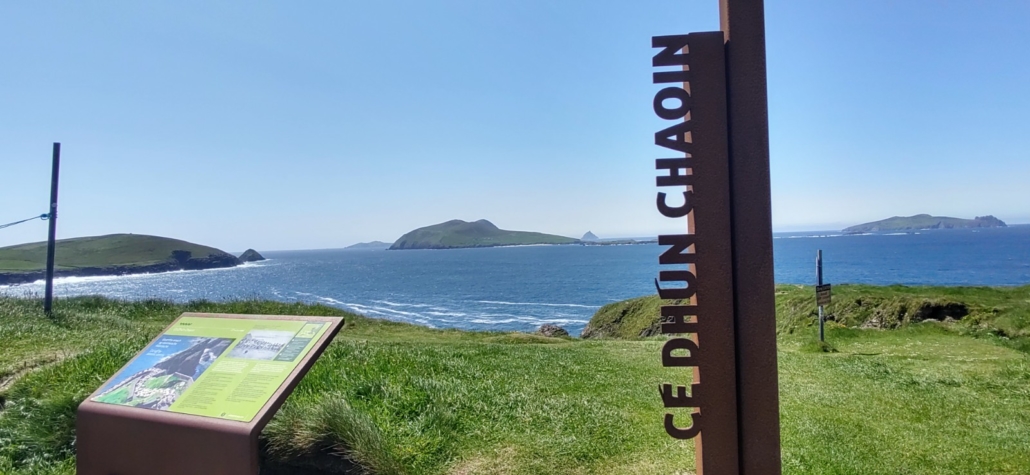


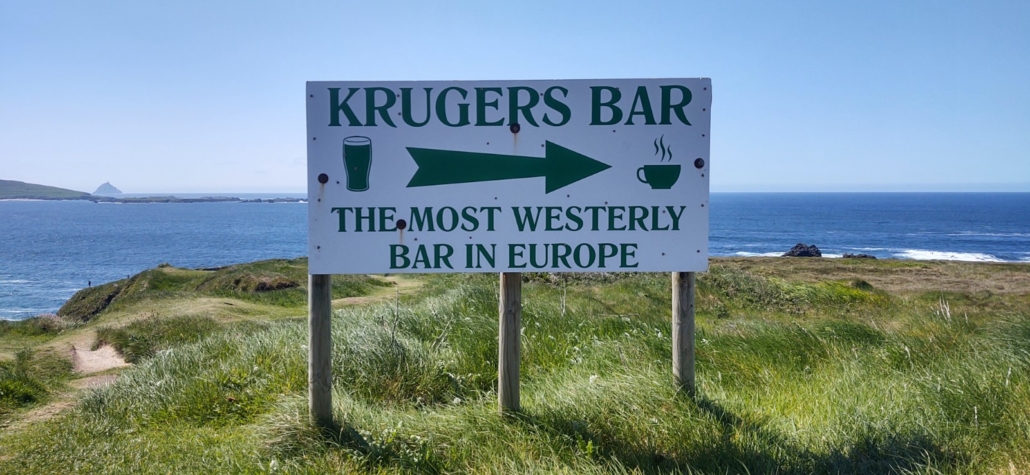
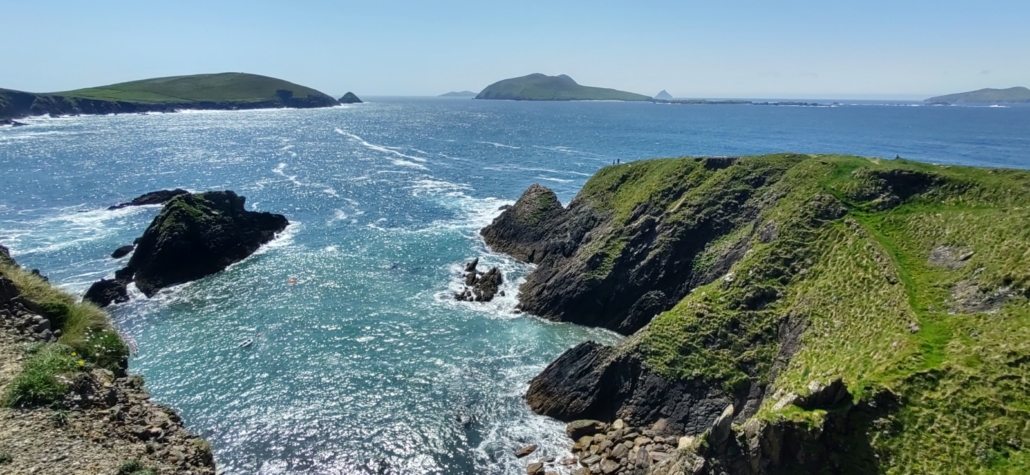
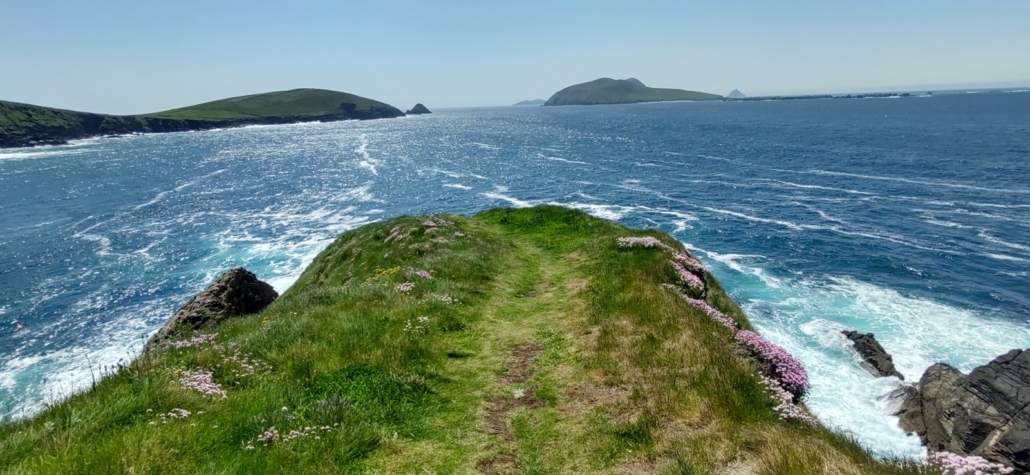
We tackled the steep path to the pier, supped a brew and ate some lunch. Around 4pm the car park was getting quiet so we guessed the one at Coumeenoole would be too and headed back over, only about 2 miles away. Yep, plenty space now, and what a place. The views out over the Atlantic, the distant ghost-like Skellig Islands, the stretch of beach way below us penned in by high cliffs, fantastic!
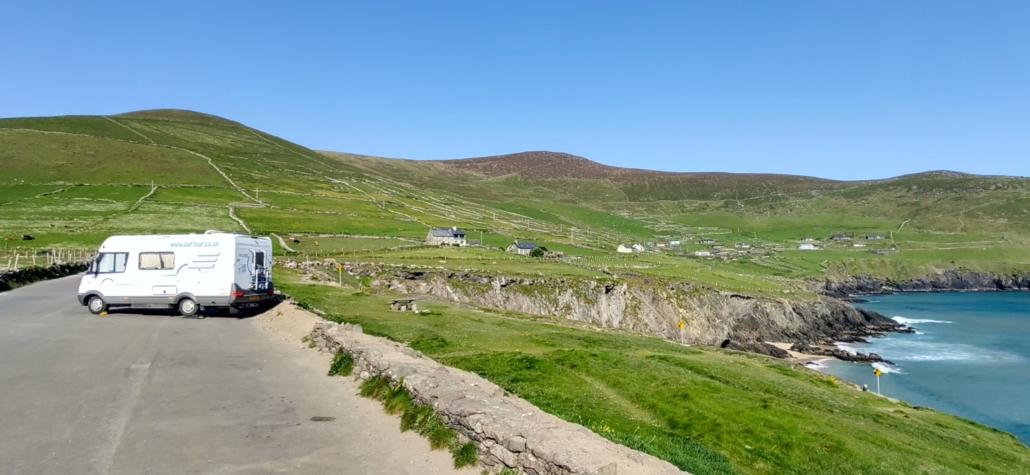
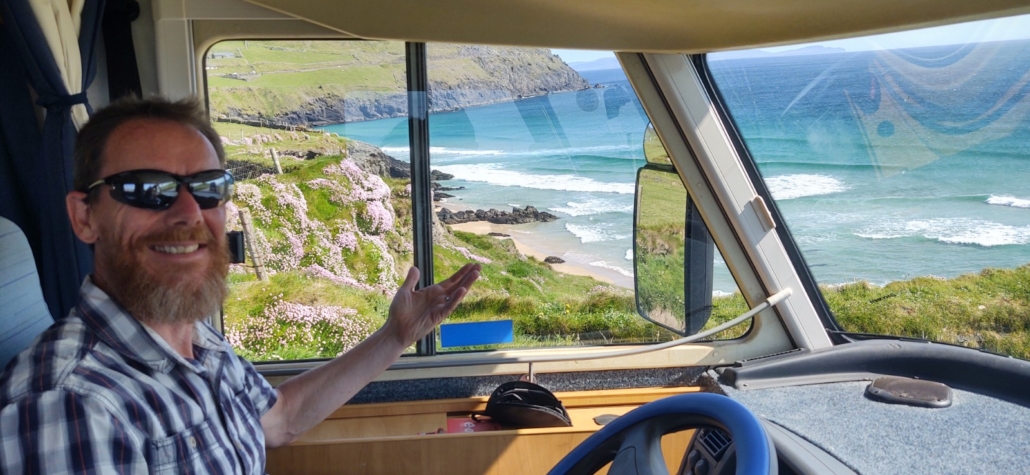
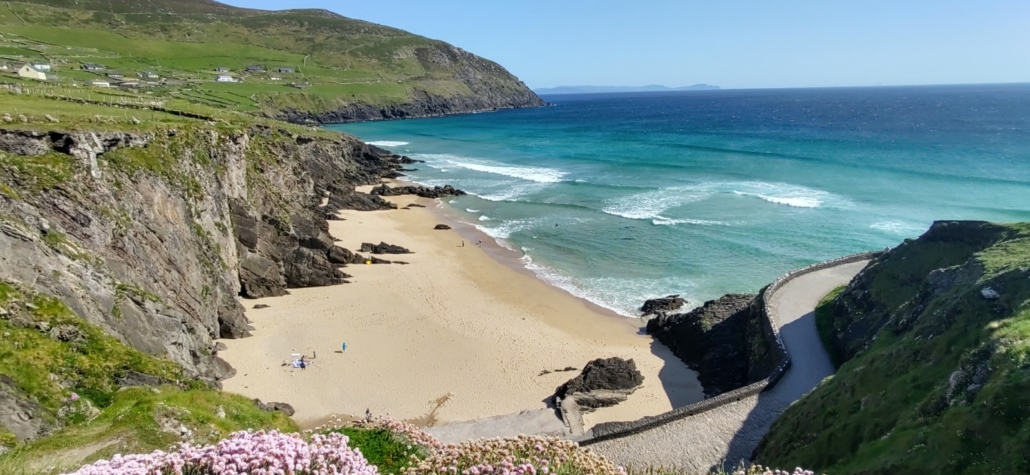
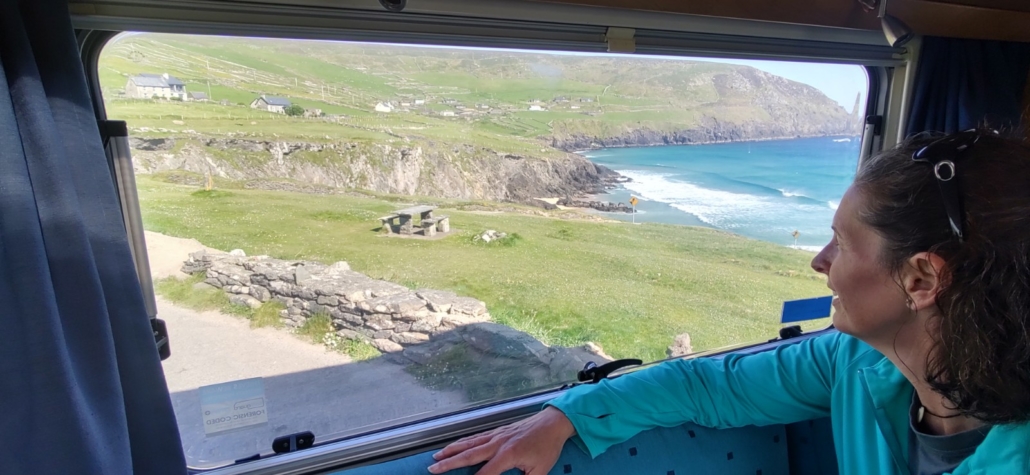
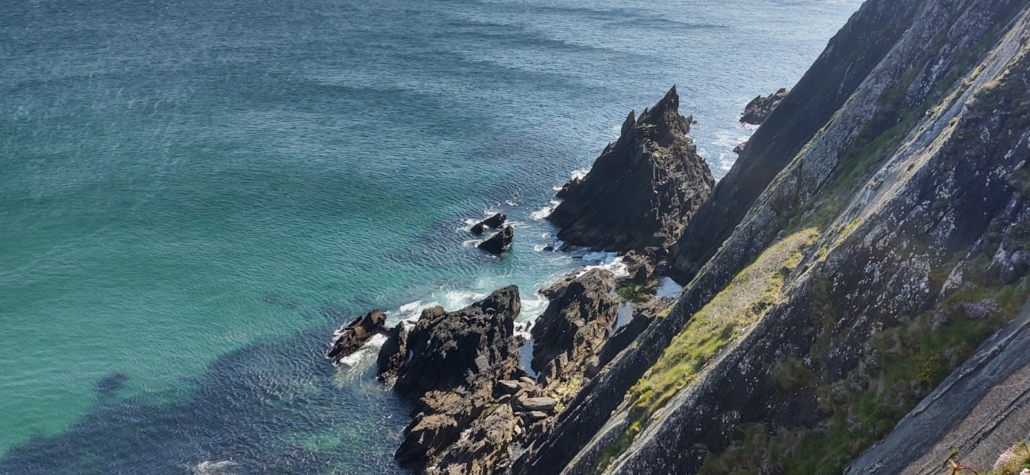
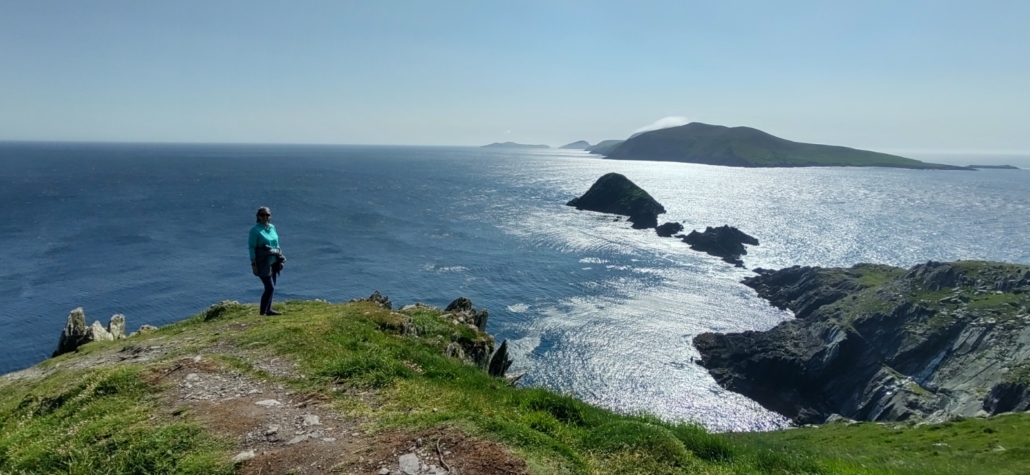
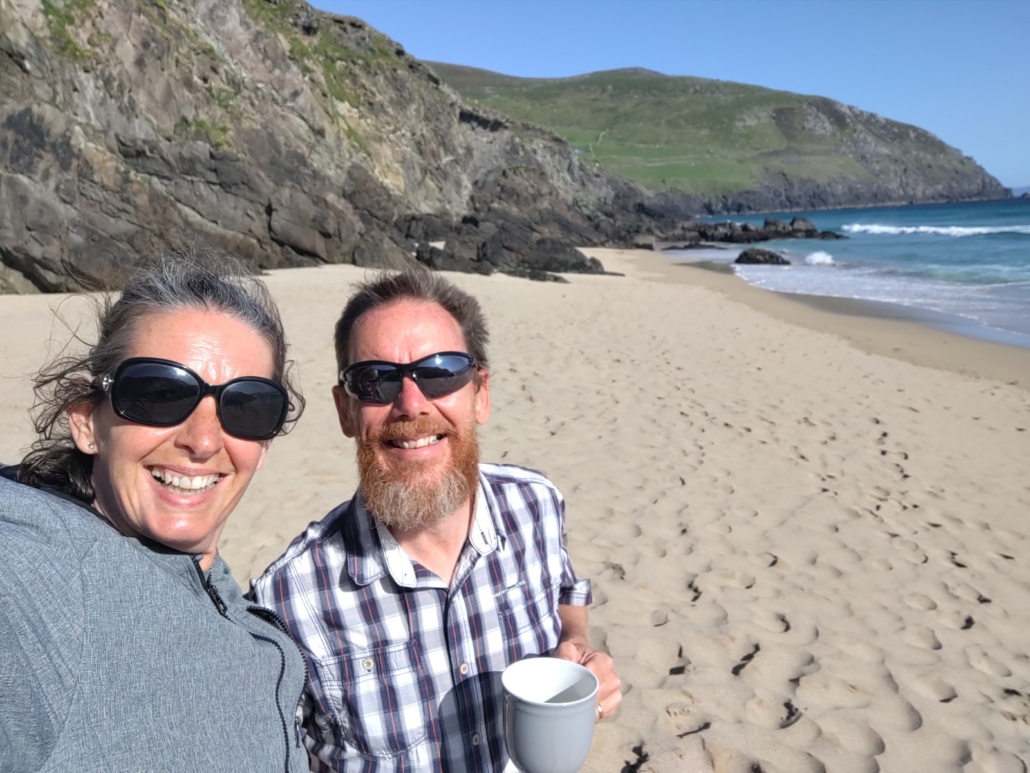
Coumeenoole gets rave reviews on park4night, but the same warning appears again and again: wind. And it was blowing pretty hard, wafting us round on the cliff path to Dunmore Head, one-time filming location for Star Wars. Nothing major, but even with the van parked facing into the wind, it felt like we were perched on the edge of a cliff. With the washing-machine effect of the steady blasts of air, neither of us were feeling comfortable so come 6:30pm, the Goldilocks Two, as we should be known, decamped again.
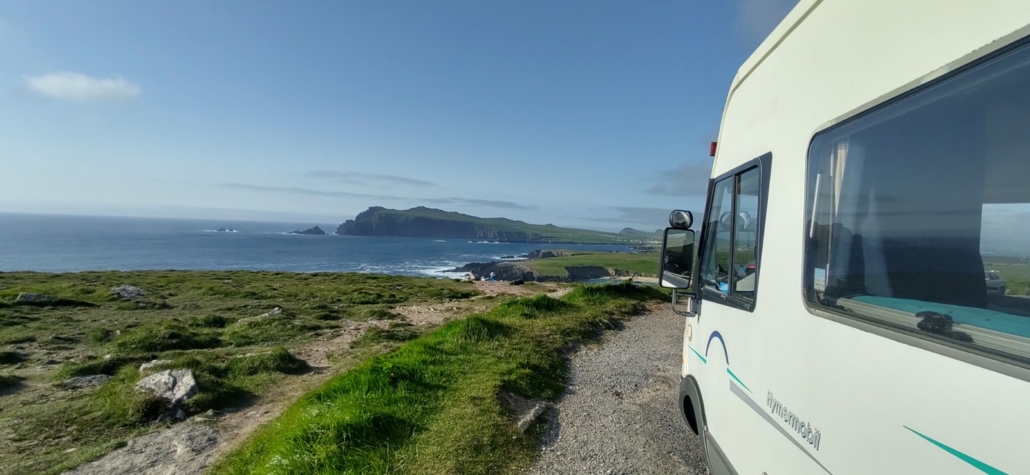

I’m now writing this with yet another stunning view, this time of the bay at Clogher Strand (N52.156771, W10.459575). Everyone else is here too. By the time we left Coumeenoole it was pretty much empty. It was a really epic place to stay up there, reminding us of some of the great places we stayed in Norway. But not if you can’t sleep a wink. Down here in Clogher it’s as packed as a free seaside aire in France, but we’re very used to that and amazingly it’s free.

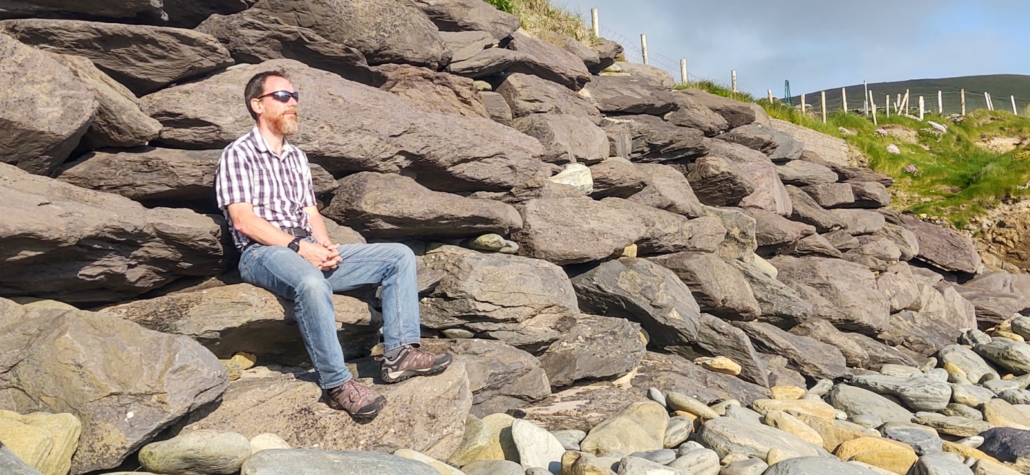
Phew, what a couple of days! Dingle is definitely busier and more touristy than the peninsulas in County Cork, but it packs quite a punch.
Cheers, Jay


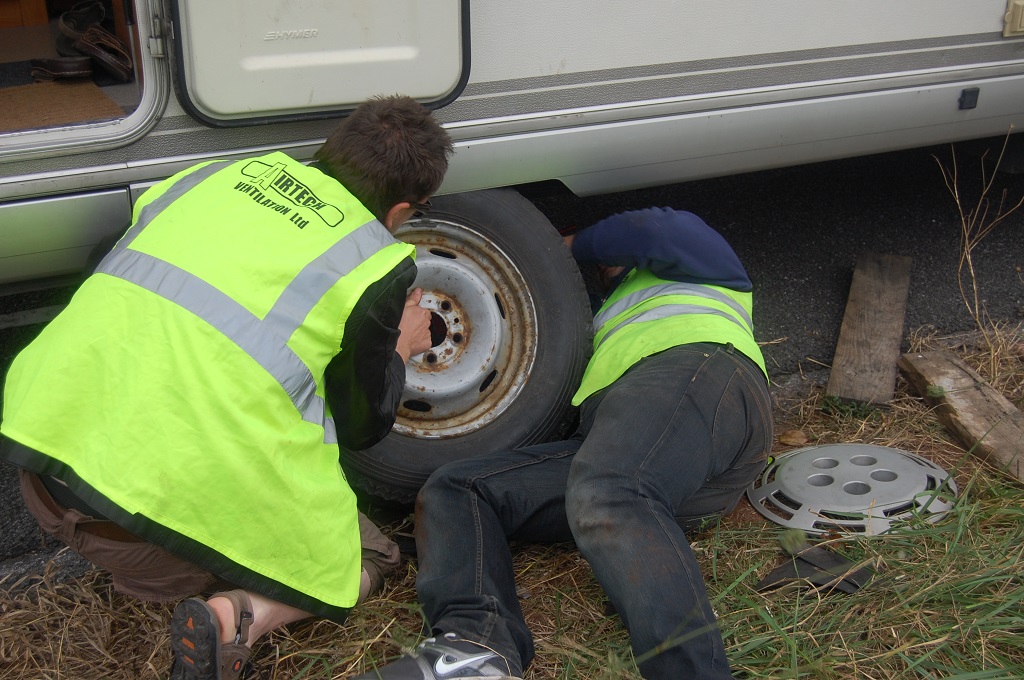
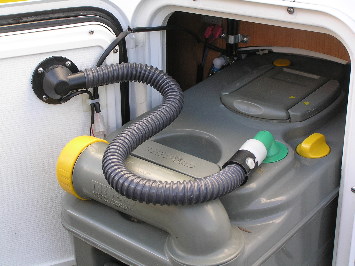
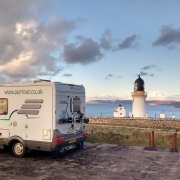
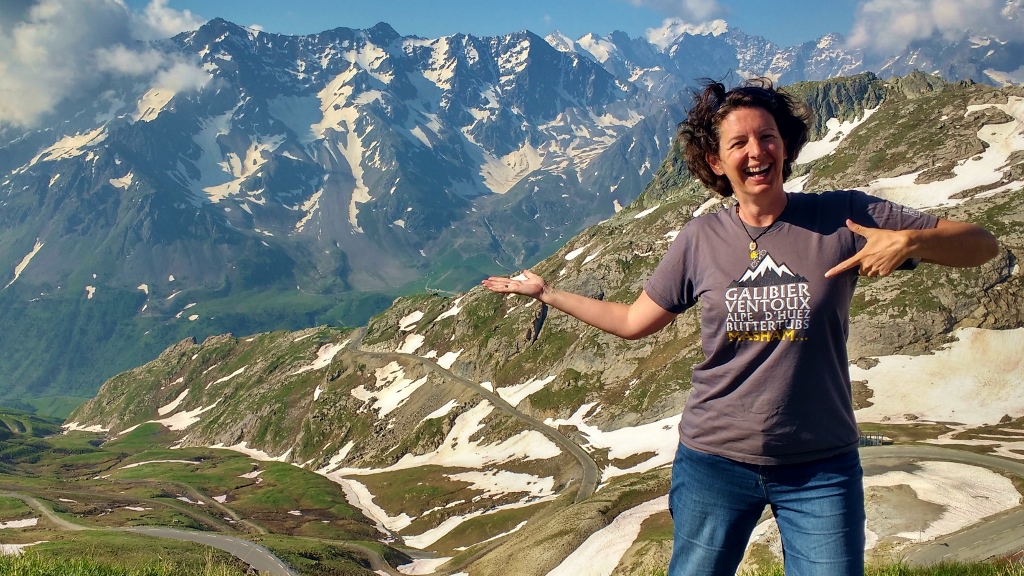
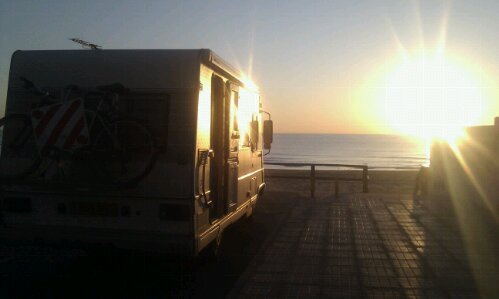
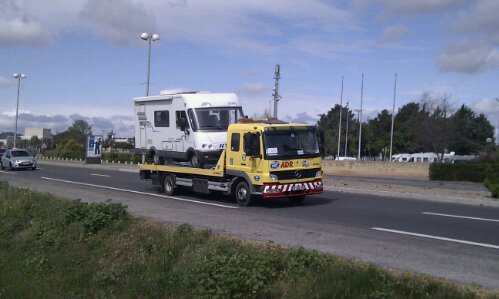


Leave a Reply
Want to join the discussion?Feel free to contribute!